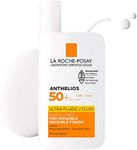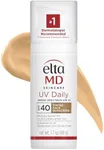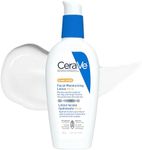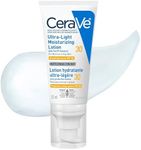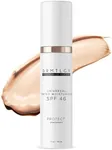Buying Guide for the Best Sunscreens
Choosing the right sunscreen is important for protecting your skin from the harmful effects of the sun. Sunscreens come in many forms and with different features, so understanding what each specification means can help you make a choice that fits your lifestyle, skin type, and activities. The best sunscreen for you will depend on how much time you spend outdoors, your skin sensitivity, and your personal preferences for texture and application.SPF (Sun Protection Factor)SPF measures how well a sunscreen protects your skin from UVB rays, which are the main cause of sunburn. The higher the SPF number, the greater the level of protection. SPF values are usually divided into low (2-15), medium (15-30), high (30-50), and very high (50+). If you spend a lot of time outdoors or have fair skin that burns easily, a higher SPF is recommended. For everyday use or if you have darker skin that rarely burns, a lower SPF may be sufficient. Always remember to reapply sunscreen regularly, regardless of the SPF.
Broad Spectrum ProtectionBroad spectrum means the sunscreen protects against both UVA and UVB rays. UVA rays can cause skin aging and long-term damage, while UVB rays cause sunburn. Not all sunscreens offer broad spectrum protection, so it's important to check the label. If you want complete protection from the sun's harmful effects, always choose a sunscreen labeled as broad spectrum.
Water ResistanceWater resistance indicates how well the sunscreen stays on your skin when you sweat or swim. Sunscreens are usually labeled as water resistant for either 40 or 80 minutes. This means the sunscreen will maintain its SPF protection for that amount of time while you are in the water or sweating. If you plan to swim or exercise outdoors, choose a water-resistant sunscreen and remember to reapply after swimming or heavy sweating.
Type (Chemical vs. Physical/Mineral)Sunscreens can be chemical or physical (also called mineral). Chemical sunscreens absorb UV rays, while physical sunscreens reflect them. Chemical sunscreens tend to be lighter and less visible on the skin, making them good for daily wear. Physical sunscreens, which use ingredients like zinc oxide or titanium dioxide, are often better for sensitive skin and provide immediate protection. If you have sensitive skin or prefer natural ingredients, a physical sunscreen may be best. If you want a lightweight feel, a chemical sunscreen might suit you better.
Texture and FinishSunscreens come in various textures such as lotions, creams, gels, sprays, and sticks. Lotions and creams are good for dry skin and full-body coverage, while gels and sprays are often preferred for oily skin or hard-to-reach areas. Sticks are convenient for on-the-go application, especially on the face. The finish can be matte, dewy, or invisible. If you have oily skin, a matte finish may be more comfortable, while those with dry skin might prefer a moisturizing or dewy finish. Choose the texture and finish that feels best on your skin and fits your daily routine.
Ingredients and SensitivitySome sunscreens contain fragrances, alcohol, or other ingredients that can irritate sensitive skin. If you have allergies or sensitive skin, look for sunscreens labeled as hypoallergenic or formulated for sensitive skin. Reading the ingredient list can help you avoid substances that may cause reactions. If you have specific skin concerns, such as acne or eczema, choose a sunscreen that is non-comedogenic (won't clog pores) or designed for your skin type.
